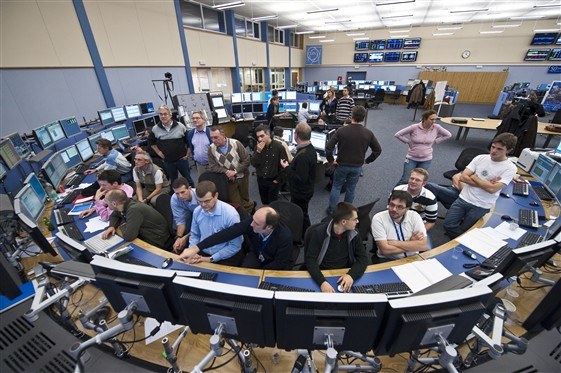After a frustrating false start, the Large Hadron Collider (LHC) finally got it up and running in its underground home at CERN on the Swiss-French border near Geneva. The scientists behind the world’s biggest scientific, announced that they had primed to energies higher than any previous particle accelerator has ever reached; beating the US Tevatron at Fermilab in Illinois by 20%.
The LHC accelerated protons from an “injection” energy of 0.45 trillion electronvolts to 1.18 TeV. An electronvolt is the energy gained by a single electron being accelerated by a 1 volt potential difference. 1.0 TeV is about 0.16 billionths of a Joule, equivalent to the kinetic energy of a flying mosquito.
The LHC is one of the most ambitious scientific projects every undertaken. Ultimately, the scientists behind it hope that it will reveal one of the most mysterious of natural phenomena – mass. The machine will smash together sub-atomic particles at high speeds. Scientists hope to find the so-called Higgs boson among the collision debris. This particle is the key ingredient in a significant theory – the Higgs-Brout-Englert-Guralnik-Hagen-Kibble mechanism – developed in the 1960s that attempts to explain mass of certain subatomic particles based on the existence of the elusive boson.
The first beams were injected into the LHC on 20th November 2009, although the team does not expect to carry out any actual science until 2010. Nevertheless on 23rd November, they had succeeded in circulating two beams of particles simultaneously and recorded collision data for the first time. The record-breaking energies were reached on 30th November.
“I was here 20 years ago when we switched on CERN’s last major particle accelerator, LEP,” enthused Accelerators and Technology Director Steve Myers. “I thought that was a great machine to operate, but this is something else. What took us days or weeks with LEP, we’re doing in hours with the LHC.”

The next step is to increase the beam intensity before delivering good quantities of collision data to the experiments before Christmas. So far, all the LHC commissioning work has been carried out with a low-intensity pilot beam. Higher intensity is needed to provide meaningful proton-proton collision rates. Safety is paramount and so the current work is looking at how stable the much higher intensity beams will be. If successful, the scientists will then calibrate the LHC until the end of the year and then begin the first particles physics experiments proper early in 2010 during which collision energies of 7 TeV will be used. Imagine seven mosquitoes colliding in the space.

Links: